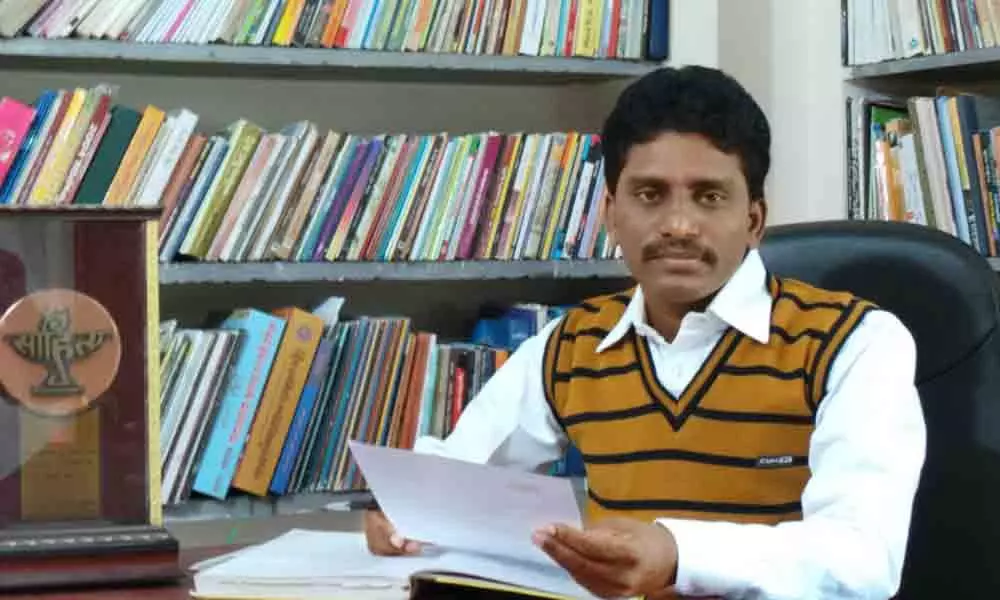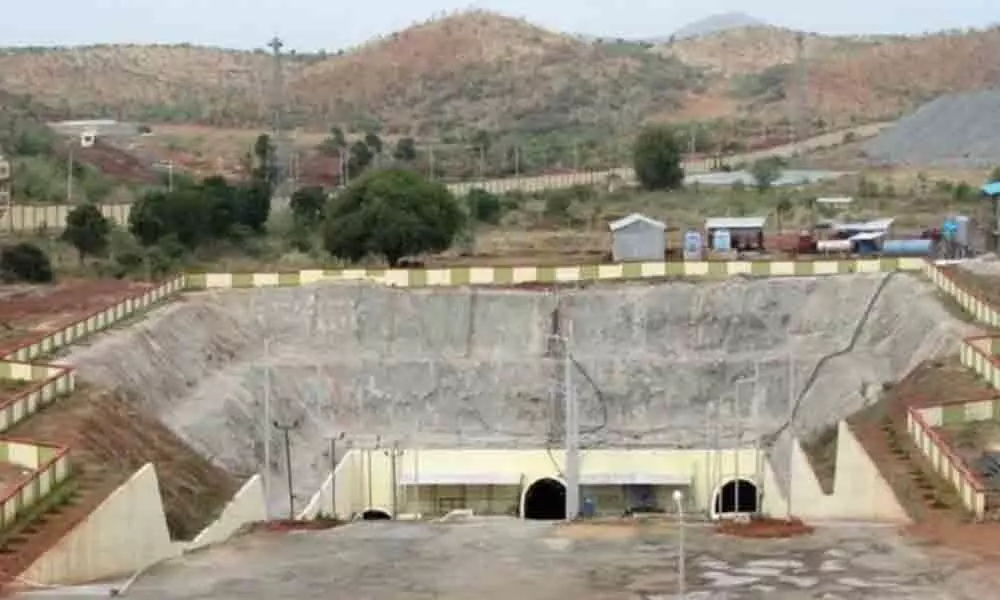Live
- Delhi HC dismisses anticipatory bail plea of ex-IAS trainee officer Puja Khedkar
- Untouched Goa Beaches You Must Visit in January
- Muzigal launches its State-of-the-art Music Academy in Nallagandla, Hyderabad
- Thoughtful Christmas Gifts for Every Loved One
- South Korea: Finance minister silent on martial law probe amid speculation on acting president's role
- Karnataka Minister Laxmi Hebbalkar Vows To Pursue Justice Against CT Ravi
- Stands By Vijayaraghavan Amid Row Over Remarks On Gandhis
- Karnataka Legislative Council Chairman Denies Recording Controversial Exchange
- Lexus India to Redefine Luxury Mobility at Bharat Mobility Global Expo 2025
- Hindustan Zinc Supported Farmers Achieve INR 5 Cr Revenue Through Five Farmer Produce Organizations
Just In
A ringside view - Dr Vempalli Gangadhar

The mark of a seasoned and conscientious novelist is the ability to sustain within the theme he has in his mind without any extra frills and digressions and to powerfully convey the message within the framework of the story effectively. Dr Vempalli Gangadhar, who was a recipient of Central Sahitya Akademi's Yuva Puraskar in 2001, is a much-venerated writer and his contribution in elevating the level of novel writing to serve a social purpose is very impressive.
Dr Gangadhar's novel 'Uranium Palle' is primarily based on the Uranium Project, which was started in the village called Tummalapalli in Vemala Mandal under Pulivendula constituency of Kadapa district. This novel was published as a daily serial in Vishalaandhra daily and received appreciation and attention.
The book opens to a small verse which when loosely translated into English reads:
"Be it one Tummalapalli
Or Koodankulam
Or kovvada
The place doesn't matter
The one who has raised a blood-fist
Became a Nuclear Reactor there..."
The book carries the letters, the correspondence between Dr Gangadhar and Company Secretary and Public Information Officer of Uranium Corporation of India who responded to the questions raised by Dr Gangadhar, the letter furnishes the information sought, regarding the preventive measures taken to ensure the safety of people to prevent any human loss during the excavation and whether they are taking care to see that the groundwater doesn't get polluted and so on. The officer's letter reads in the affirmative.
There is a very detailed important preface like write-up 'Nalla raathi guttala daarilo' by the author that talks about the background in which the novel is rooted and foregrounds the hardcore reality of the Uranium Project and concomitant issues - and about the importance of educating people by spreading awareness about the Project - the pros and cons. This explains how much research has gone into this book which is loaded with information and data regarding the Uranium Project. The book carries two pictures of the Uranium Project site in Tummalapalli.
The novel covers a whole gamut of events - of how Uranium was found in one particular location, how mining activity was taken up, how opinion poll was conducted by the Pollution Control Board to get people's opinion and reaction, the protests by the people living in the villages all around the area where Uranium was found, the protest demonstrations by social organisations and activists against radiation and nuclear activity - all these aspects are covered in this novel in a very pertinent way.
It is a fact that radioactive properties of Uranium can cause concerns for public health and safety. After coming to know about that people residing in the affected villages started voicing their anger in disgruntled slogans raised against the groundwater drying up due to the excavating process of Uranium and demanding that people who have lost their land have to be compensated by providing jobs etc. On the September 10th of 2006, the first opinion poll was conducted about the Uranium Project. Fierce violent scenes took place then. Nevertheless, on November 20, 2007 – the Uranium Project commenced.
Since then through the underground mining process, 1,500 tons to 2000 tons of crude Uranium was excavated and extracted - but after the crude Uranium is cleaned, the waste product has to be filled in tail ponds- but that work to build the tail ponds got terminated. No one was providing the necessary awareness to people about anything. All these important aspects are featured in the novel with knowledge gained by years of research and due diligence done by the author.
Against the background of poverty, illiteracy of people of the villages the author penned few characters and situations that convey the story through their dialogue build-up. Sreeramulu, Maddileti, Venkatesu, Ramireddy, Ankireddy, Chalamareddy, Venkatanaidu, Balireddy, Munireddy, Ghouse - through these characters and few more, Gangadhar conveys and moves the Uranium story. Great poverty breeds great greed - and people play games with that weakness by dangling carrots but knowledge, awareness and information about Uranium project will not be disseminated.
Gangadhar explicated the major concerns about the disasters this toxic metal can cause and at the same time, he had explained how Nuclear power will become necessary to meet up with the estimated requirement of 60 thousand Megawatts of electricity by 2030. He effectively shows both sides of the situation
This is not just a socially relevant novel, the gripping narrative replete with factual information serves a larger purpose in educating the general public and to evoke response and action from those involved with this huge Uranium project.

© 2024 Hyderabad Media House Limited/The Hans India. All rights reserved. Powered by hocalwire.com









